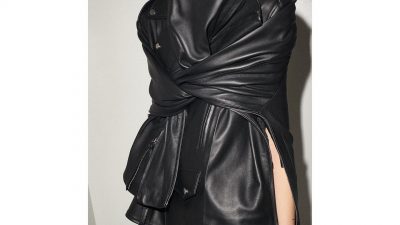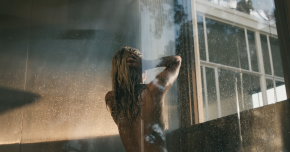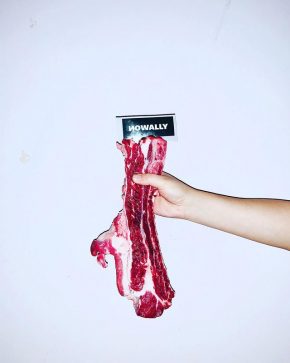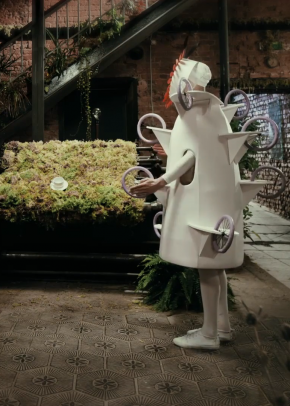We take an exclusive look inside the new and expanded re-issue of cult book X-Rated Adult Movie Posters of the 60s and 70s, a curation of the best in (porno)graphic film art
The history of cinema is peppered with examples of exceptional poster art, many of which have become almost as iconic as the films themselves – think Hitchcock’s Vertigo, its poster rendered to graphic perfection by the legendary Saul Bass, or Philip Castle’s triumphant use of triangles for Stanley Kubrick’s Clockwork Orange. In the case of 60s and 70s X-rated movies, however, most would agree that the posters win hands down with their brilliantly retro combination of pun-punctuated taglines, cut-and-paste imagery and pop culture references. Now, a new and expanded version of X-Rated Adult Movie Posters of the 60s and 70s, the cult 2003 publication from authors Tony Nourmand and Graham Marsh, serves as a welcome opportunity to re-enter the titillating worlds of The Bush Whacker, Satan’s Mistress, Scarlet Négligée et al in all their pert, printed perversion.
X-Rated Adult Movie Posters of the 60s and 70s
The first iterations of adult movies emerged in the mid-1950s, when filmmakers began to covertly cater to audiences’ sexual fantasies by documenting daily life in nudist camps, where people roamed bear for the supposed benefit of their health. But the novelty of naturists soon wore off, and in 1959 director Russ Meyer released The Immortal Mr Tea, the first softcore movie or ‘nudie-cutie’ depicting naked women in a fictional setting, its poster a playful illustration of a woman bathing in a bearded man’s top hat. ‘Nudies’ enjoyed a brief success in dedicated late-night movie theatres but by the 1960s, porn producers were having to contend with the increasingly raunchy, and much more compelling, art house movies springing up across Europe. This coincided with the publication of the uncensored sadist novels of the Marquis de Sade, and soon the ‘roughie’ – a popular subgenre combining sex and violence on-screen – was born. This was epitomised by the Olga trilogy of 1964 which saw Audrey Campbell as the titular protagonist, who tortures various women in her capture (tagline: “Only a fiend could do what Olga did to 12 young girls!”).

Other adult films of the 1960s played on contemporary culture to hilariously kitsch effect, from Tales of a Salesman (less Willie Loman, more Peeping Tom) to The Pink Pussy: Where Sin Lives (its poster replete with the distinct Pink Panther-style font). Poster designers followed suit; the compelling artwork for 70s film The Private Dick, for example, borrows heavily from the work of Saul Bass, depicting a naked woman surrounded by the graphic, linear outline of a detective, while the ad for The Sex Shuffle – “in sexadelic colour” – borrows “the balloon lettering, body paint and swirling motifs of psychedelia,” as Peter Doggett notes in the book’s introduction.

By the late 60s, however, X-rated movie directors had become disheartened by the artlessness of their medium, struggling to keep pace with the likes of explicit, critically acclaimed films such as Antonioni’s Blow-Up. Audiences were similarly dwindling, and producers realised it was time to get hardcore, resulting in the so-called ‘beaver flicks’ of the 1970s – cue the likes of Flesh Gordon and The Nibblers (“you are what you eat”). Interestingly, it was also around this time that the “porno chic” movement arose, as films such as Deep Throat (1972), The Opening of Misty Beethoven (1976) and Debbie Does Dallas (1978) garnered mainstream acclaim and box office success. Today, the X-rated movies of the 60s and 70s are thought to embody the Golden Age of adult cinema, but it is undoubtedly their posters that remain their greatest – and least problematic – legacy. As Doggett neatly summarises, “[The artists’] mission was to tease and provoke, to conjure up fantasies and arouse repressed desires, with minimum budget and maximum impact. Everything – typography, the pictorials, those enticing verbal come-ons – was focussed on the irresistible allure of the forbidden” – and what could make for better viewing?
X-Rated Adult Movie Posters of the 60s and 70s is available from September 1, published by Reel Art Press.

























Comments